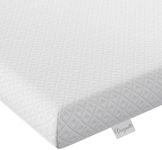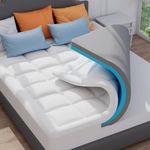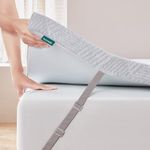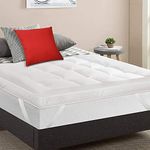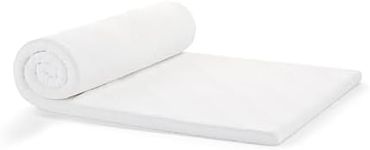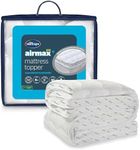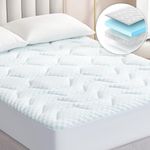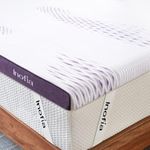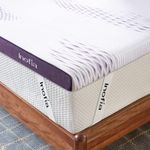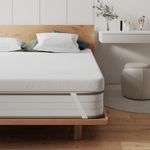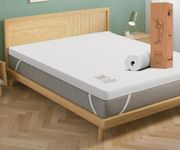Buying Guide for the Best Memory Foam Toppers
Memory foam toppers are a great way to enhance the comfort and support of your existing mattress without the need to purchase a new one. They are designed to conform to your body shape, providing personalized support and relieving pressure points. When choosing a memory foam topper, it's important to consider several key specifications to ensure you select the best fit for your needs. Understanding these specs will help you make an informed decision and improve your sleep quality.ThicknessThickness refers to how thick the memory foam topper is, typically measured in inches. This spec is important because it affects the level of support and comfort the topper provides. Toppers usually range from 1 to 4 inches thick. A 1-2 inch topper is suitable for those who want a slight enhancement to their mattress, while a 3-4 inch topper offers more significant support and comfort, ideal for those with back pain or who prefer a softer sleeping surface. Choose the thickness based on your comfort preference and the condition of your current mattress.
DensityDensity is measured in pounds per cubic foot (PCF) and indicates the weight and durability of the memory foam. This spec is important because it affects the topper's longevity and support. Low-density foam (2-3 PCF) is softer and less durable, suitable for occasional use or lighter individuals. Medium-density foam (3-4 PCF) offers a balance of comfort and support, ideal for most sleepers. High-density foam (4-5 PCF) is the most durable and supportive, perfect for heavier individuals or those with chronic pain. Choose the density based on your weight, usage frequency, and support needs.
FirmnessFirmness describes how soft or hard the memory foam topper feels. This spec is important because it affects your comfort and spinal alignment. Firmness is usually rated on a scale from soft to firm. A soft topper is ideal for side sleepers who need cushioning for their shoulders and hips. A medium-firm topper is suitable for back sleepers who need support for their lower back. A firm topper is best for stomach sleepers who require a stable surface to prevent their spine from arching. Choose the firmness based on your sleeping position and personal comfort preference.
Temperature RegulationTemperature regulation refers to the topper's ability to maintain a comfortable sleeping temperature. This spec is important because memory foam can retain heat, making you feel too warm during the night. Some toppers are infused with cooling gel, have open-cell structures, or are made with breathable materials to enhance airflow and dissipate heat. If you tend to sleep hot, look for a topper with good temperature regulation features to ensure a cooler and more comfortable sleep.
Motion IsolationMotion isolation is the topper's ability to absorb movement and prevent it from transferring across the bed. This spec is important for couples or light sleepers who are easily disturbed by their partner's movements. Memory foam naturally has good motion isolation properties, but some toppers are designed to enhance this feature further. If you share your bed with a partner or are a light sleeper, choose a topper with excellent motion isolation to minimize disturbances and improve sleep quality.
Hypoallergenic PropertiesHypoallergenic properties refer to the topper's ability to resist allergens such as dust mites, mold, and bacteria. This spec is important for individuals with allergies or asthma. Some memory foam toppers are treated with antimicrobial agents or made from materials that naturally resist allergens. If you have allergies or respiratory issues, look for a hypoallergenic topper to create a healthier sleeping environment.
